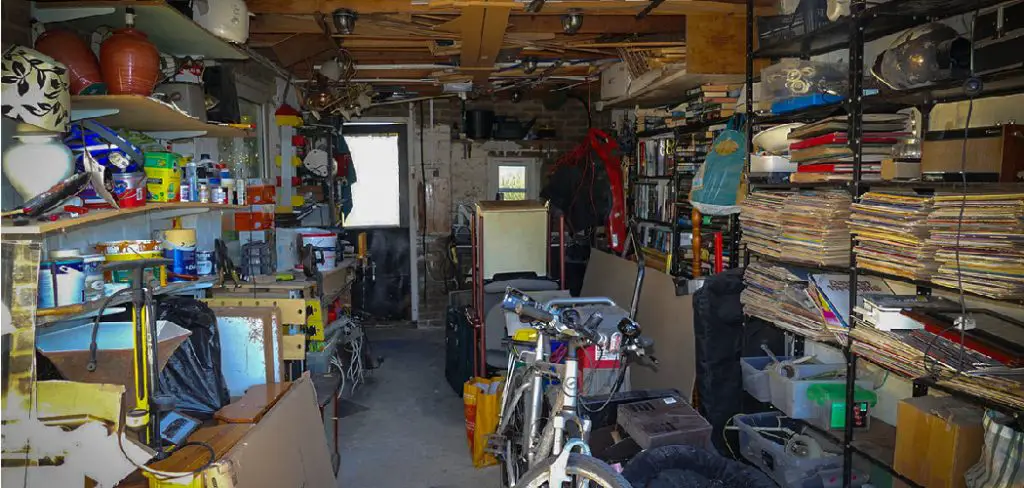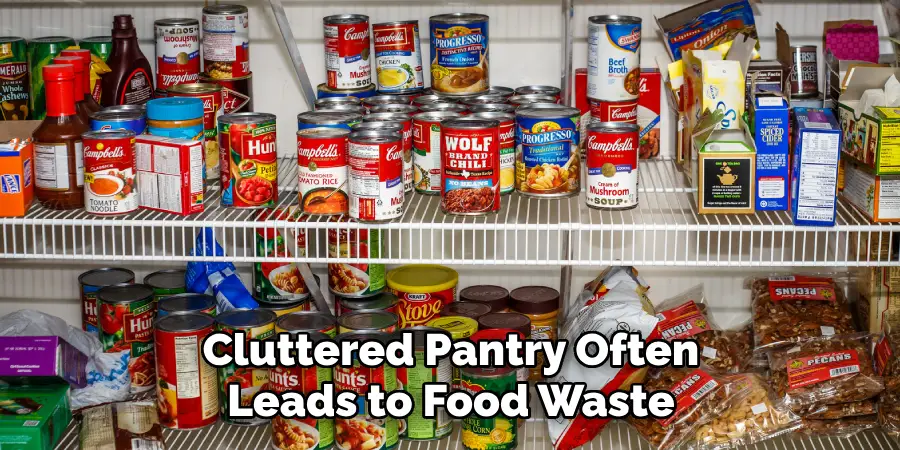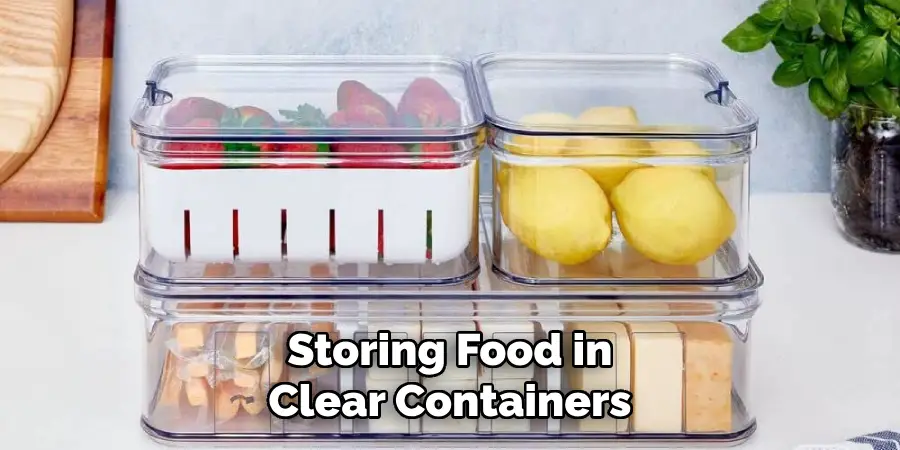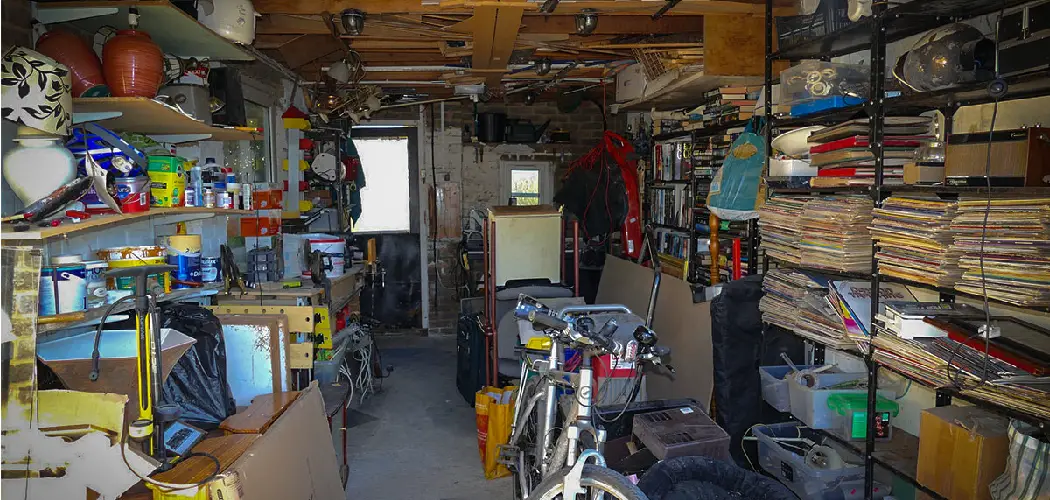Have you always dreamed about having an organized, spacious and inviting basement pantry similar to those featured on style-savvy home sites? Thankfully, it’s not impossible to turn your disorganized storage area into a tidy oasis!

Learn how with our step-by-step guide on how to declutter and organize the basement pantry. With just a few simple practical solutions, guiding tips and inspiring ideas we’ll lead you through organizing this hardworking corner of your home.
Owning an organized basement pantry can not only save you time spent rummaging through boxes trying to find something specific, but will also help prevent hoarding tendencies and will give your space a much cleaner look overall.
Whether you have been using it as a catch-all for years or this is your first introduction to the concept, the organization doesn’t need to be intimidating. Here’s how you can declutter and organize your basement pantry quickly!
Why May You Want to Declutter and Organize the Basement Pantry?
1 . To Save Time and Energy
When your basement pantry is cluttered and disorganized, it takes more time and energy to find the items you need. This can be especially frustrating when you are in a rush or trying to prepare a meal. By decluttering and organizing your pantry, you can easily locate the items you need, saving both time and energy.
2 . To Prevent Food Waste
A cluttered pantry often leads to food waste. When items are hidden or forgotten, they can expire and go to waste. By decluttering and organizing your basement pantry, you can keep track of the items you have and use them before they expire.

3 . To Maximize Storage Space
Basement pantries tend to be smaller than kitchen pantries, so it’s important to make the most of the limited space. By decluttering and organizing your pantry, you can assess what items are essential and what can be stored elsewhere. This will maximize your storage space and make it easier to find and access items.
4 . To Improve Safety
A cluttered basement pantry not only makes it difficult to find items, but it can also be a safety hazard. Stacked or disorganized items can fall and cause injury. By decluttering and organizing your pantry, you can create a safer environment for yourself and others.
5 . To Save Money
When your pantry is cluttered and disorganized, you may end up buying duplicate items because you can’t find what you already have. This can lead to unnecessary spending and waste. By decluttering and organizing your basement pantry, you can keep track of what you have and avoid buying items you don’t need.
How to Declutter and Organize the Basement Pantry in 5 Easy Steps
Step 1: Assess the Storage Space
Before starting to declutter and organize your basement pantry, it’s important to assess the storage space you have available. This will help determine what items can be stored in the pantry and how they should be organized. Start by measuring the dimensions of your pantry shelves and cabinets. Then, take a look at the items you want to store and group them into categories based on size and frequency of use.
Step 2: Decluttering
Once you have assessed your storage space, it’s time to declutter. Start by taking everything out of the pantry and sorting them into piles or boxes labeled with categories such as “Keep,” “Donate,” and “Throw Away.” This will help you make quick decisions about what items are worth keeping and what items can be let go. Be realistic about your storage space – if you haven’t used an item in over a year, it’s likely time to say goodbye.
Step 3: Invest in Storage Solutions
Now that you have decluttered and know what items you want to keep, it’s important to invest in the right storage solutions for your basement pantry. This could include shelves, bins, baskets, or even a pegboard for hanging smaller items. Utilize vertical space as much as possible to maximize storage potential.

Step 4: Organize by Category
Next comes the fun part – organizing your pantry! Start by grouping similar items together and labeling them accordingly. For example, all canned goods should be stored together, and all baking supplies should have their own designated area. This will make it easier to find items when you need them.
Step 5: Maintenance is Key
Once your basement pantry is decluttered and organized, it’s important to maintain it regularly. Make a habit of doing a quick sweep of the pantry every few weeks to ensure everything is in its proper place and to take note of any items that may need to be restocked. This will prevent your pantry from becoming cluttered again in the future.
By following these five steps, you can effectively declutter and organize your basement pantry. Remember, the key is to regularly assess, declutter, and maintain your space for a clutter-free and organized pantry.
Some Extra Tips to Declutter and Organize the Basement Pantry
1 . Do Not Overcrowd Your Shelves
It’s important to leave some space between items on your shelves so that they are easily accessible. This also allows for easier cleaning and prevents items from getting lost in the back of the pantry.
2 . Use Clear Containers
Storing food in clear containers not only makes it easy to see what you have, but also keeps everything neat and uniform. Plus, it helps to keep food fresh for longer.

3 . Label Everything
Labels are essential for keeping your pantry organized. You can use regular labels or invest in a label maker for a more professional look. Make sure to label the contents of each container as well as the expiration date if applicable.
4 . Utilize Wall Space
Don’t forget about the walls in your pantry! You can install a shelves or hanging racks to store additional items such as spices, oils, or small kitchen gadgets. This frees up space on your shelves and keeps everything within reach.
5 . Rotate Your Stock
As you add new items to your pantry, make sure to rotate older items to the front so that they are used first. This prevents food from going to waste and helps you keep track of what needs to be restocked.
6 . Consider Temperature and Lighting
Basements tend to be cooler and darker than other parts of the house, so it’s important to consider this when organizing your pantry. Keep perishable items like fruits and vegetables on higher shelves or in warmer spots, and make sure to add additional lighting if needed.
7 . Regularly Declutter and Reorganize
Decluttering and organizing your pantry is not a one-time task. To maintain an organized space, it’s important to regularly go through your pantry and get rid of expired items or things you no longer need. This also allows you to reorganize and make any necessary adjustments to your system.
Frequently Asked Questions
What Precautions Should I Take Before Decluttering and Organizing My Basement Pantry?
Before starting the decluttering process, it is important to take a few precautions to ensure your safety and avoid any potential hazards.
- Wear protective gear such as gloves, masks, and closed-toe shoes to protect yourself from dust, mold, or sharp objects.
- Make sure the area is well-ventilated and use a mask if necessary, especially if you are allergic to dust or mold.
- Have a first aid kit nearby in case of any accidents.
- If there are any heavy objects or items that need to be moved, make sure to have someone help you. Do not attempt to lift heavy objects alone.

How Should I Begin the Decluttering Process?
The first step to decluttering and organizing your basement pantry is to take everything out and sort it into categories. This will help you get a better idea of what items you have and how much space you have to work with. Create piles for items that need to be thrown away, donated, or kept.
What Should I Do With Items That Are Expired?
Check the expiration dates of all food and other items in your basement pantry. Discard any expired items as they can be potentially harmful if consumed.
How Can I Maximize Space in My Basement Pantry?
To maximize space, consider using storage solutions such as shelves, bins, or stacking containers. Utilize vertical space by installing shelves or hanging organizers on the walls. You can also use the back of the pantry door for additional storage space.
How Often Should I Declutter and Organize My Basement Pantry?
It is recommended to declutter and organize your basement pantry at least twice a year, or more frequently if needed. This will help prevent clutter from accumulating and make it easier to maintain an organized space.
Conclusion
A decluttered and organized basement pantry not only makes cooking and meal prep easier, but also saves time and money by preventing food waste. Use these extra tips along with the steps outlined in the main text to transform your basement pantry into a well-organized and functional space.
Now you know how to declutter and organize the basement pantry, you can apply these tips to other areas of your home as well. Remember to regularly assess and declutter your pantry to maintain its organization and functionality. With a little effort and consistency, you can have a clutter-free pantry that makes cooking and meal prep a breeze. So don’t wait any longer, get started on transforming your basement pantry today!

